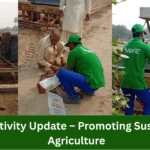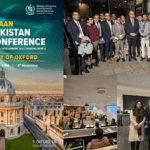News
SAWIE participates in workshop on AWD Tubes and GHG emission calculations: A Step Towards Climate-Smart Rice Farming
SAWIE recently joined a critical workshop organized by the Asian Development Bank (ADB) and CABI, focusing on the implementation of Alternate Wetting and Drying (AWD) technology in rice fields and the calculation of greenhouse gas (GHG) emissions. Partnering with key stakeholders such as PepsiCo, Galaxy, RPL, and Matco, the workshop underscored the importance of scalability, farmer adaptability, and exploring opportunities in the carbon market.

Top News
The Impact of AWD on Rice Cultivation
AWD is an innovative irrigation technique designed to improve water management in rice production. Unlike conventional continuous flooding, AWD allows for controlled drying periods between irrigations, which significantly reduces water usage. During the workshop, scientific comparisons were drawn between conventional practices, single drainage, and AWD. Visually, AWD stood out with a significant impact—plants in AWD plots remained unlogged, showcasing the technique’s ability to prevent waterlogging and improve plant resilience.
Benefits of AWD in Reducing Greenhouse Gas Emissions
One of the standout advantages of AWD is its role in reducing GHG emissions, particularly methane. Rice paddies are a major source of methane, a potent GHG, due to the anaerobic conditions caused by continuous flooding. By allowing intermittent drying periods, AWD disrupts the anaerobic environment, leading to a substantial reduction in methane emissions. Studies have shown that adopting AWD can reduce methane emissions by up to 48%, while also conserving up to 30% of water.
Learning Outcomes for Farmers
For farmers, the transition to AWD offers multiple benefits beyond environmental sustainability. The technique improves water productivity, reduces the cost of irrigation, and strengthens the resilience of crops against extreme weather conditions, such as heavy rains, by preventing waterlogging. The workshop highlighted the importance of farmer education in successfully adopting AWD, with a focus on real-world demonstrations that illustrated the visible improvements in plant health and yield.
SAWIE’s Mission for Sustainability
At SAWIE, we are committed to promoting sustainable agricultural practices that benefit both the environment and the farming community. AWD technology is a critical part of this mission, as it addresses the twin challenges of water scarcity and climate change. By reducing water use and minimizing methane emissions, AWD aligns perfectly with our vision for climate-smart agriculture. As we continue to collaborate with international partners like ADB and CABI, we aim to scale up the adoption of AWD across Pakistan and beyond, helping farmers improve productivity while contributing to global efforts to mitigate climate change.
Stay tuned for more updates as we continue to drive sustainable solutions in agriculture!
Join us on our mission for a sustainable future!



